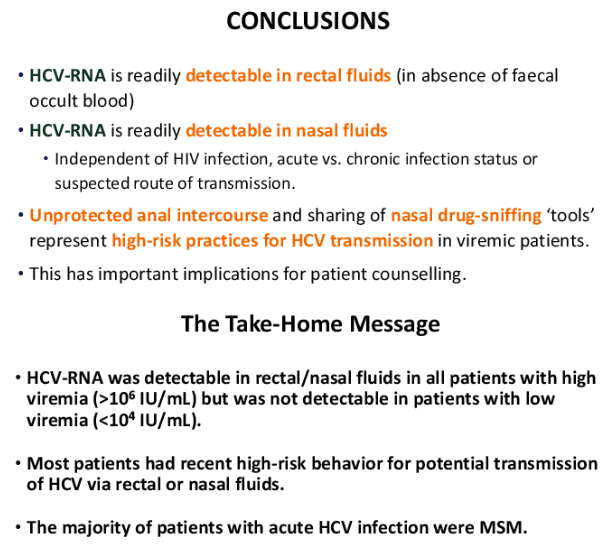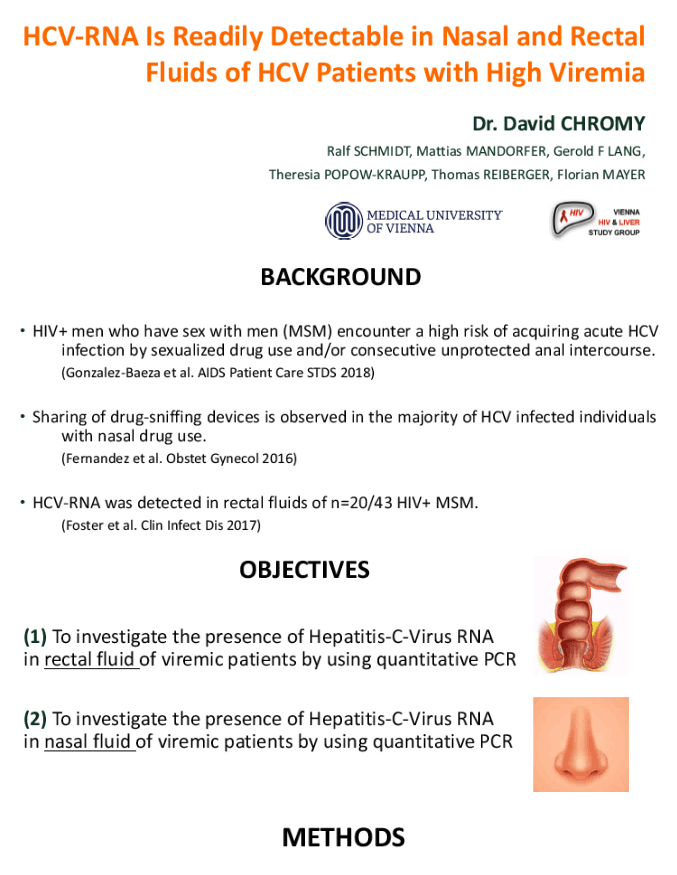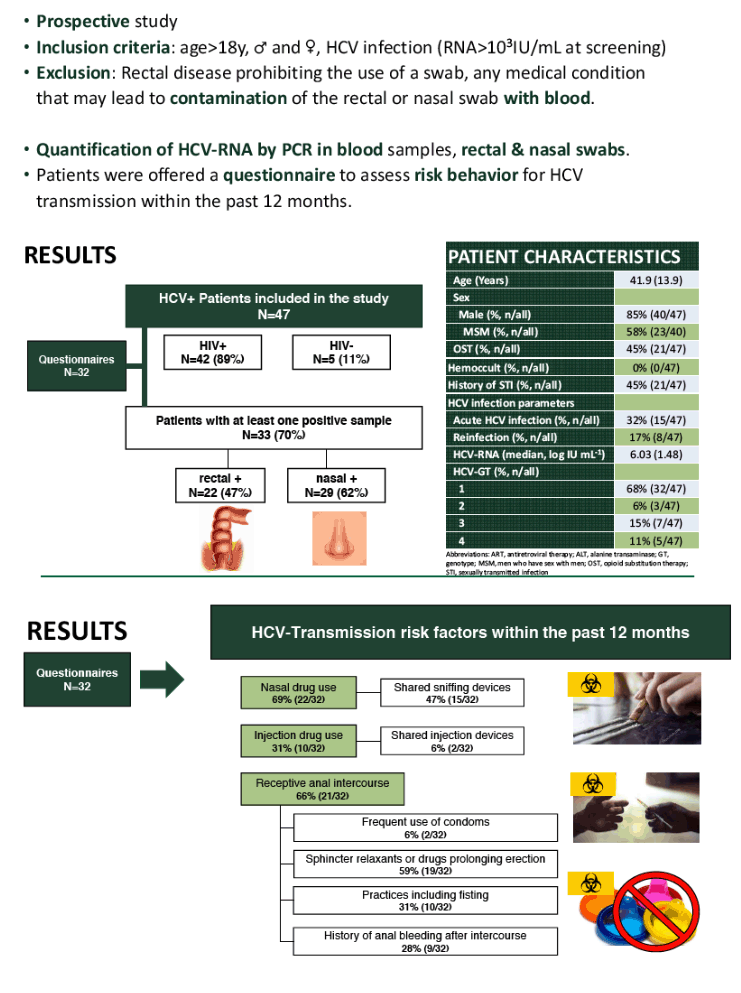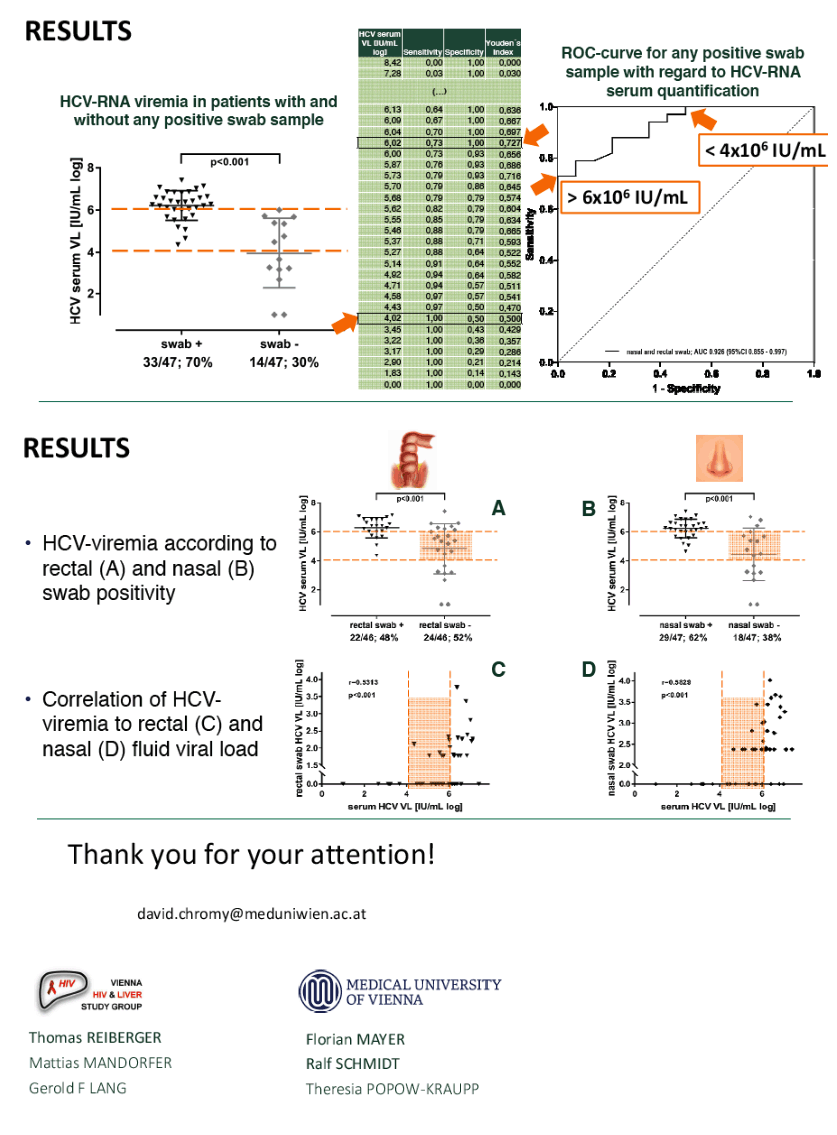 |
 |
 |
| |
HCV-RNA Is Readily Detectable in Nasal and Rectal
Fluids of HCV Patients with High Viremia
|
| |
| |
Reported by Jules Levin
AASLD 2018 Nov 9-13 SF
Dr. David CHROMY
Ralf SCHMIDT, Mattias MANDORFER, Gerold F LANG,
Theresia POPOW-KRAUPP, Thomas REIBERGER, Florian MAYER

program abstract
Background: There is an ongoing epidemic of hepatitis C virus (HCV) infection among men who have sex with men (MSM). Although epidemiological studies observed an association with certain sexual practices and/or concomitant recreational drug use, the underlying mechanisms of HCV transmission via these routes remains poorly defined.
Methods: 34 Patients with acute (AHC) or chronic (CHC) HCV infection were prospectively enrolled. Rectal and nasal swabs were obtained in all patients and after calibration and validation of the HCV assay, HCV-RNA levels were quantified in swab samples. Fecal occult blood tests were performed to rule out rectal bleeding. Questionnaires were used to assess risk behaviour related to recreational drug use and sexual practices.
Results: Mean age was 43±8 years, the majority of patients (91%; 31/34) were HIV+ and 82% (28/34) were male of whom 64% (18/28) were MSM. AHC was observed in 32% (11/34) with all patients being HIV+MSM and 91% (10/11) having a history of sexually transmitted diseases. The most common HCV-genotype (GT) was GT-1a (50%; 17/34) whereas GT-1b, GT-2, GT-3 and GT-4 were observed in 15% (5/34), 3% (1/34), 21% (7/34) and 12% (4/34), respectively. Twenty-three (68%) patients had at least one positive swab sample (56%; 19/34 nasal and 52%; 17/33 rectal), whereas blood contamination was never detected. Individuals with positive swab sample had significantly higher HCV-RNA viremia vs. patients with negative swab sample (6.37 IQR 1.06 log IU/mL vs. 4.76 IQR 2.54 log IU/mL; p<0.001; Figure).
ROC curves showed an AUC of 0.909 (CI-95% 0.814-1.000) for the prediction of at least one positive swab sample and a AUC values of 0.831 (CI-95% 0.681-0.981) and 0.793 (95%-CI 0.629-0.957) for rectal and nasal swabs, respectively.
Conclusion: HCV-RNA is readily detectable in rectal (despite the absence of fecal occult blood) and nasal fluids in patients with AHC/CHC, independently of HIV status, duration of HCV infection or the suspected route of HCV acquisition. Thus, our data strongly suggest that sharing of nasal drug-sniffing 'tools' and unprotected anal intercourse represent high-risk practices for HCV transmission, especially in patients with high serum HCV-RNA levels.




|
| |
|
 |
 |
|
|